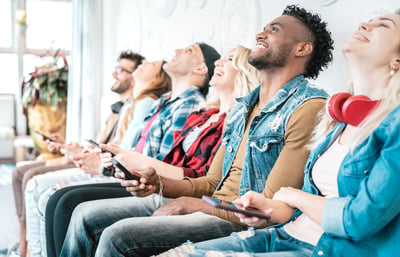May 3, 2023
 by Jennifer Kim / May 3, 2023
by Jennifer Kim / May 3, 2023

In marketing, awareness is not the goal; advocacy is.
Gone are the days when putting ads in newspapers and magazines was enough. The impact of social media and word-of-mouth marketing on the product choices of modern consumers is stronger than ever. As a result, more and more brands are turning to influencer marketing for product endorsements and brand mentions.
Influencer marketing focuses on working with social media influencers to drive your brand’s message to a targeted audience. It combines the idea of celebrity endorsements with content-driven marketing strategies. Influencers promote a brand by creating content and get paid monetarily or through free products.
Technologies like influencer marketing platforms and media and influencer targeting software are perfect for identifying and contacting social media influencers. These tools also assist in the management of marketing campaigns and influencer-generated content.
Influencer marketing is not just a compensated collaboration between a brand and an influencer but rather a sincere relationship. Instead of brands blindly fixating on the number of follows and likes, it’s important to build genuine relationships with influencers who share your brand’s vision and goals.
When executed right, your influencer marketing strategy will connect you with the right buyers. It will work because it relies on the influencer’s credibility and authenticity, which already exist in the minds of their audience.
Influencer marketing ties in components of social media marketing and content marketing. Influencers spread the word about a brand on their personal social channels, and they do so by creating content surrounding a brand’s product or service.
There are mainly four types of influencers, including:
Similar to inbound marketing or brand marketing, there’s no one-size-fits-all approach to influencer marketing. You need to create a strategy that meets the specific needs of the audience you want to reach and that fits your product or service the best. Here’s a set of steps to get you started.
Start by defining what you wish to achieve and say with your influencer marketing campaign. Use the SMART goal-setting strategy, and keep the three Rs in mind: reach, relevance, and resonance.
Reach defines the ability to connect with your target audience through an influencer. It determines whether people see the content you put out.
Relevance is creating and promoting content that matches your brand, product, or service. It creates a connection with your audience and enhances brand loyalty.
Resonance is about the impact your content has on an audience. It drives them to take action and reflects in the form of increased follower count, traffic to your website, and conversions.
Before moving forward with your influencer marketing strategy, invest some time in understanding your audience and building a customer profile. This step will enable you to identify the audience you wish to go after and sell to.
It will also help decide the kind of content you wish to create with the influencer, which connects with the audience. Plus, when you work with influencers, you get the benefit of tapping into their existing follower base, which can take your marketing efforts to the next level.
You need to set aside some chunk of your marketing budget that you’re willing to spend on influencer content. The budget will vary depending on the type of influencer you are working with.
For instance, if you’re a new startup, you might have a strict budget for influencer marketing. In this case, you can choose a micro influencer with a targeted niche audience and a smaller budget. On the contrary, a bigger company with ample resources might wish to work with a celebrity influencer with good industry authority.
Before finalizing any influencer partnerships, make sure to conduct research on their online activity. Observe the kind of content they create, does it fit your brand image, and how often they publish sponsored posts. If all they do is put out paid content, their engagement rates might not last.
Focus on working with creators who consistently create organic content as well because that’s what creates audience engagement.
You won’t be the first brand reaching out to an influencer for promotional content. Don’t send out a mass email or generic DM. Instead, create personalized messaging for your brand/product that catches their attention.
This little personalized outreach effort might take longer but will be more fruitful in striking a deal and connecting with them. Introduce your brand, talk about what you wish to accomplish with this campaign, and communicate the benefits they can reap from this collaboration (something beyond a paycheck.)
Since influencers have a content creation process, you must come up with some guidelines that allow them creative freedom while staying compliant with each of your brand images. You can brainstorm some ideas together and communicate what you expect out of the content.
Since they have been creating content for some time, they will have insights into how things work that you can benefit from. So allow them to use their expertise but make sure to communicate your expectations well.
To understand the success of your influencer marketing campaign, make sure to measure and review its performance. It will allow you to learn from your mistakes and be well-versed when you want to create more of these strategies in the future.
Refer back to the goals you set and measure the impact the campaign has created on each. You can also look out for metrics like clicks, conversions, follower counts, and engagement levels through likes, comments, and reposts.
is the expected value that the influencer marketing industry is set to reach in 2023.
Source: Influencer Marketing Hub
While some turn their noses up at influencers, the smartest brands leverage influencers’ charismatic online presence and close relationships with their followers to reach their target audiences. But the benefits of influencer marketing stretch far beyond short-term goals like increasing brand affinity and conversions.
Consumers do a lot of research prior to making a purchase, especially if they’re preparing to make a big investment. While they’ve always relied on what they hear from people they trust, like friends and family, in our digital age, shoppers are increasingly turning to influencers for product recommendations and reviews.
Influencers are some of the most trusted sources on the internet. Contrary to popular belief, most influencers care deeply about being authentic and transparent with their audiences. They know their audiences rely on them for genuine advice and insight into the latest and greatest products on the market.
By working with a brand they don’t actually like or recommending a faulty product, they could compromise the strong relationships they’ve built with their audience.
In addition, they typically have expertise in a specific niche and closely interact with their followers daily. That’s why recommendations from a trusted and knowledgeable influencer impact a consumer’s purchase decision more than a regular recommendation. By extension, working with an influencer can help build credibility for your company.
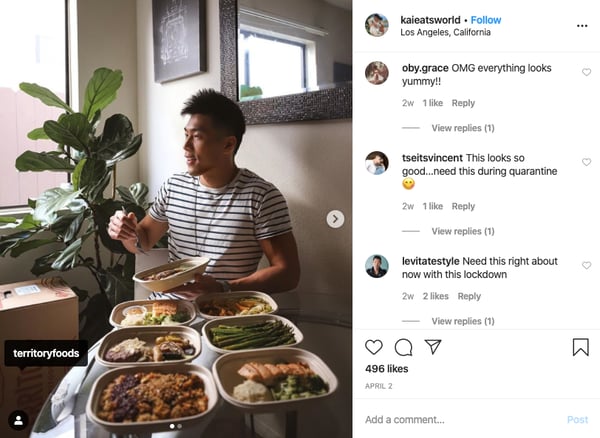
People are drawn to influencers because they can share their everyday experiences with their audience. Influencers are great at opening up about the good, the bad, and the ugly in their lives. They create relatable yet aspirational content.
That said, working with an influencer will humanize your company, as they tell an authentic story around your brand. Influencers can seamlessly incorporate your products into their lives and talk about how it fixed a problem or added value to their everyday routine. With influencer analytics, you can decide how to use the influencer's platform based on past experiences to build stories that resonate with the audience.
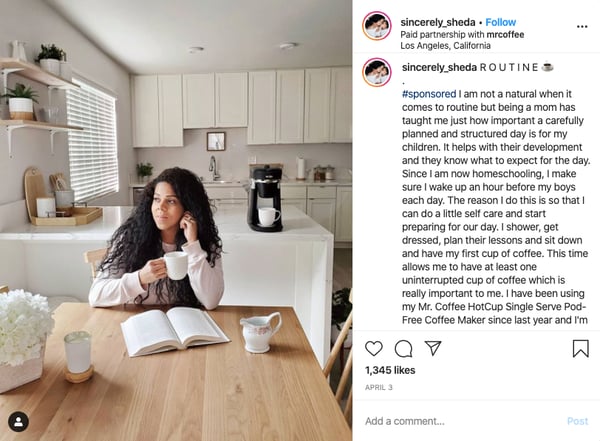
In the post above, @sincerely_sheda candidly talks about her struggles setting a routine with her kids and how taking time to enjoy a cup of coffee made with Mr. Coffee has helped her immensely.
Below, NYC-based @lostwithjess shares how she’s been enjoying the little things while social distancing, like picnics on the roof with wine delivered by Vivino. Even though their content is tagged as an #ad, they’re genuine life moments that resonate with many people.

While influencer activations deliver short-term gains in reach and awareness, one of the biggest benefits of an influencer marketing campaign is the high-quality content your brand collects following the partnership. Influencer-generated content (IGC) can play a huge role in your overall marketing strategy because it’s:
For all of these reasons, influencer-generated content is worth repurposing across all your marketing channels, whether your website, emails, paid ads, organic social, or even out-of-home activations.

If you’re still skeptical about the benefits of influencer marketing, check out how brands like Ruggable and Stella & Chewy’s were able to cut costs while boosting sales with the help of their brand partners.
Ruggable is an innovative home design brand that specializes in a unique, two-piece rug system that features a machine-washable cover and a non-slip pad. Its rugs come in more than 150 designs and are spill-resistant and non-toxic, which appeals to accident-prone consumer who still wants to invest in quality furnishings, such as moms and pet owners.
To highlight why real people value Ruggable products, the brand worked with four groups of influencers who best match their existing customer base: moms, pet owners, interior designers, and lifestyle influencers.
The brand created long-term relationships with those who truly love its product and have high engagement by inviting the creators to join Ruggable’s “MVP Program.” By collaborating with the MVP influencers over the span of 3 to 12 months, the brand was able to turn these influencers into brand evangelists who remain loyal to the brand, even outside of their one-off collaborations.

With the help of influencers, Ruggable was able to source 2,300 posts, which gained 36 million impressions and nearly 1 million engagements. The brand also increased its audience by 166,000 Instagram followers. In addition, by implementing influencer-generated content into its paid ads, the brand has seen a 32% higher return on ad spend (ROA) and a 25% lower cost per engagement (CPE).
Stella & Chewy’s is a pet food brand that focuses on offering best-in-class nutrition to its furry customers. Because the brand raises the bar in the industry, its target audience is dog and cat parents who go above and beyond for their pets. Their ideal customers actively look for premium ingredients and solutions that not only taste excellent but also support healthy nutrition.
After finding the right influencers in this niche, hyper-specific category, each creator began to work with the brand as an ambassador or product reviewer. Top creators created content on a monthly cadence to ensure that high-quality content is consistently drip-marketed to their audiences over time.
As a result of influencer-generated content fueling its marketing channels, the brand was able to spend 25-50x less than when it would use a creative agency. Last May, for Small Business Week, the brand worked with its influencers and ambassadors to send them out to their local pet stores that offer Stella & Chewy’s products.
The influencers tagged Stella & Chewy's in their posts and the store location, strengthening their relationships with independent retailers while driving 1.8 million impressions and 181.7 thousand engagements.
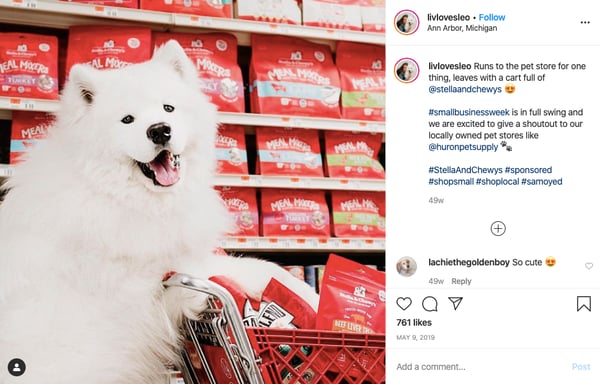
Now that you know the benefits of influencer marketing and have seen the proven results from brands like Ruggable and Stella & Chewy’s, let’s wrap up with five influencer marketing best practices to set you up for success in your next campaign.
If you’re the least familiar with influencer marketing, you know that connecting with the right influencer is the most important step in your campaign. But because there is no universally “perfect” influencer, we’ve got some tips for you to find the ideal influencer for your brand.
Make sure to look for people who:
Like many things in life, influencer marketing takes a few tries to perfect. So, work with a variety of influencers with different audience demographics and content styles. Run an initial campaign to test which creators best represent your brand and generate the most fruitful results. Then, reinvest in those top performers and invite them to collaborate again in the future.
Once you find the right influencers for your brand, hold on to them. Long-term partnerships will make the campaign more authentic and allow you to build trust with consumers, as people continuously see influencers raving about your brand time and time again. Not to mention, long-term relationships eliminate the need to constantly recruit new creators, allowing for faster campaigns with fewer misunderstandings and onboarding steps.
As mentioned above, repurposing influencer-generated content is a practice every marketer should be leveraging. Stretch the impact of the amazing content you’ve already sourced by reposting IGC across all of your marketing channels. This will allow you to cut costs while boosting your business.
A few months back, the Federal Trade Commission (FTC) released a new guide laying out the agency’s rules for when and how social media influencers must disclose sponsorships to their followers. The guideline states that influencers must disclose their partnership when:
To avoid running into serious legal trouble, both brands and influencers must comply with these recent guidelines.
Influencer marketing has taken over the marketing world in recent years for a good reason. Influencers can tell a creative story about your brand on social media, provide social proof to consumers, and generate eye-catching content that your brand can use throughout the marketing funnel.
With these best practices and learnings under your belt, start building your influencer community and leverage their power to reach your goals now and in the years to come.
A. Influencer marketing involves brands collaborating with online influencers to market their products and services. It improves brand awareness and recognition while building audience engagement.
If you’re ready to put strategies into practice, explore the best influencer marketing software to find the right tools for campaign execution.
This article was originally published in 2021. It has been updated with new information.
Jenn Kim is a Content Marketing Specialist at AspireIQ, an influencer marketing platform. She writes about influencer marketing, social media, and community engagement for B2C brands.
So, you’re ready to delve into the world of influencer marketing.
 by Trelawney Erwin
by Trelawney Erwin
Ten years ago, the concept of hiring a social media manager seemed outlandish to most brands.
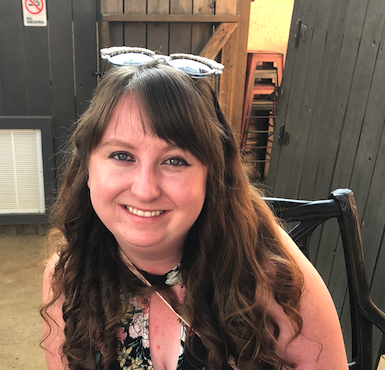 by Haley Fraser
by Haley Fraser
Influencer marketing has vastly grown over the last number of years, and has no intention of...
 by Steve Habazin
by Steve Habazin
So, you’re ready to delve into the world of influencer marketing.
 by Trelawney Erwin
by Trelawney Erwin
Ten years ago, the concept of hiring a social media manager seemed outlandish to most brands.
 by Haley Fraser
by Haley Fraser

